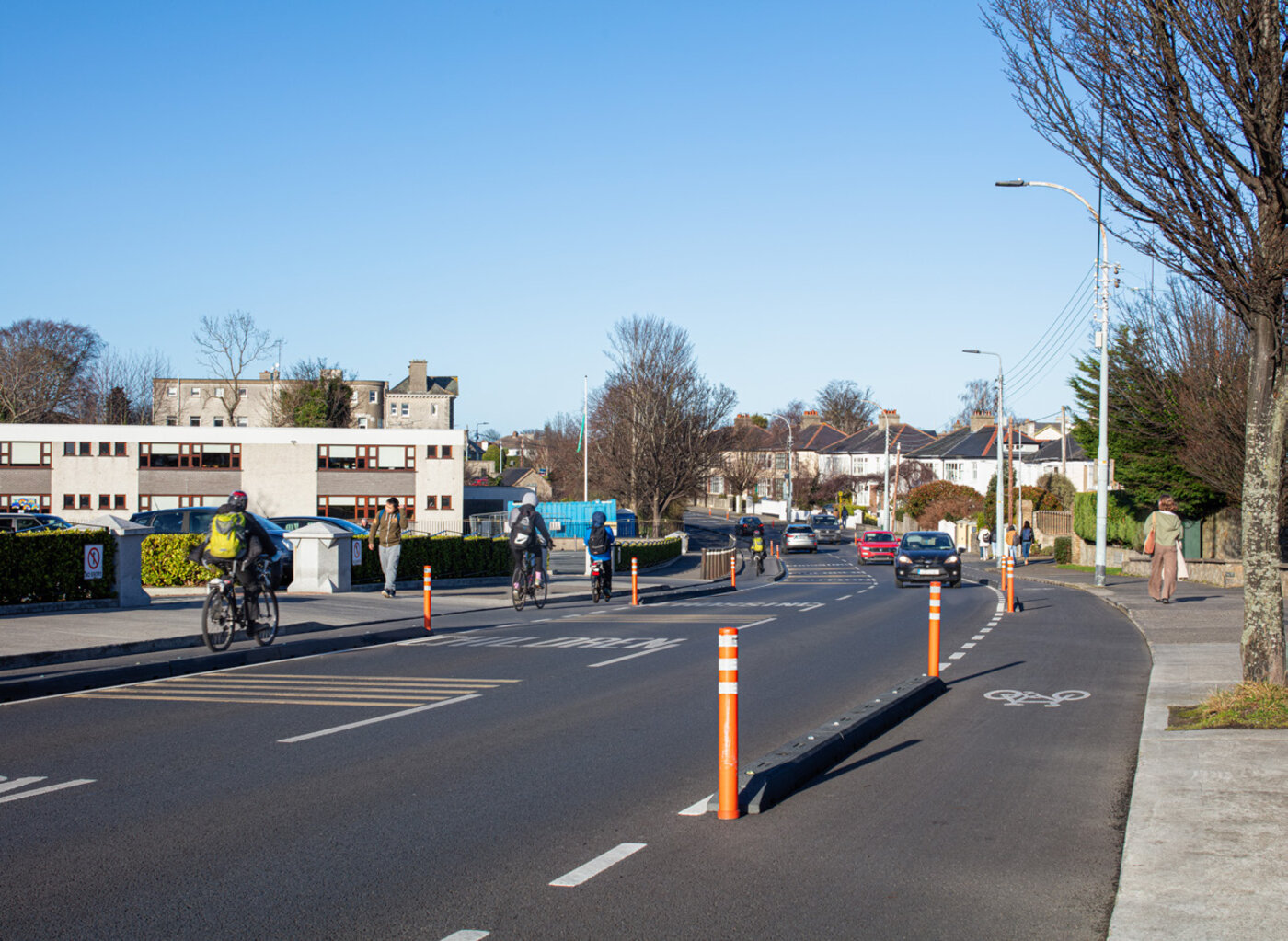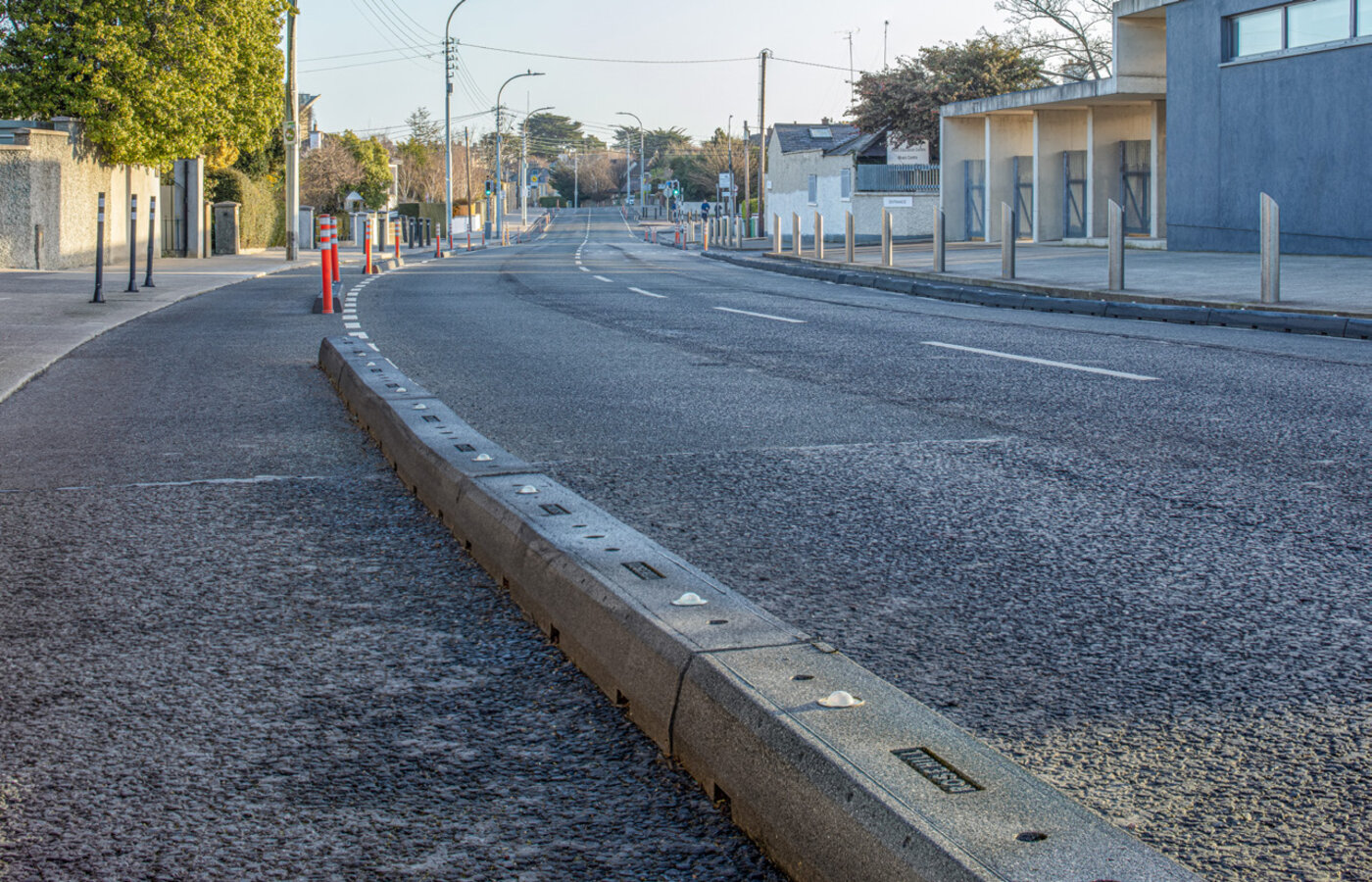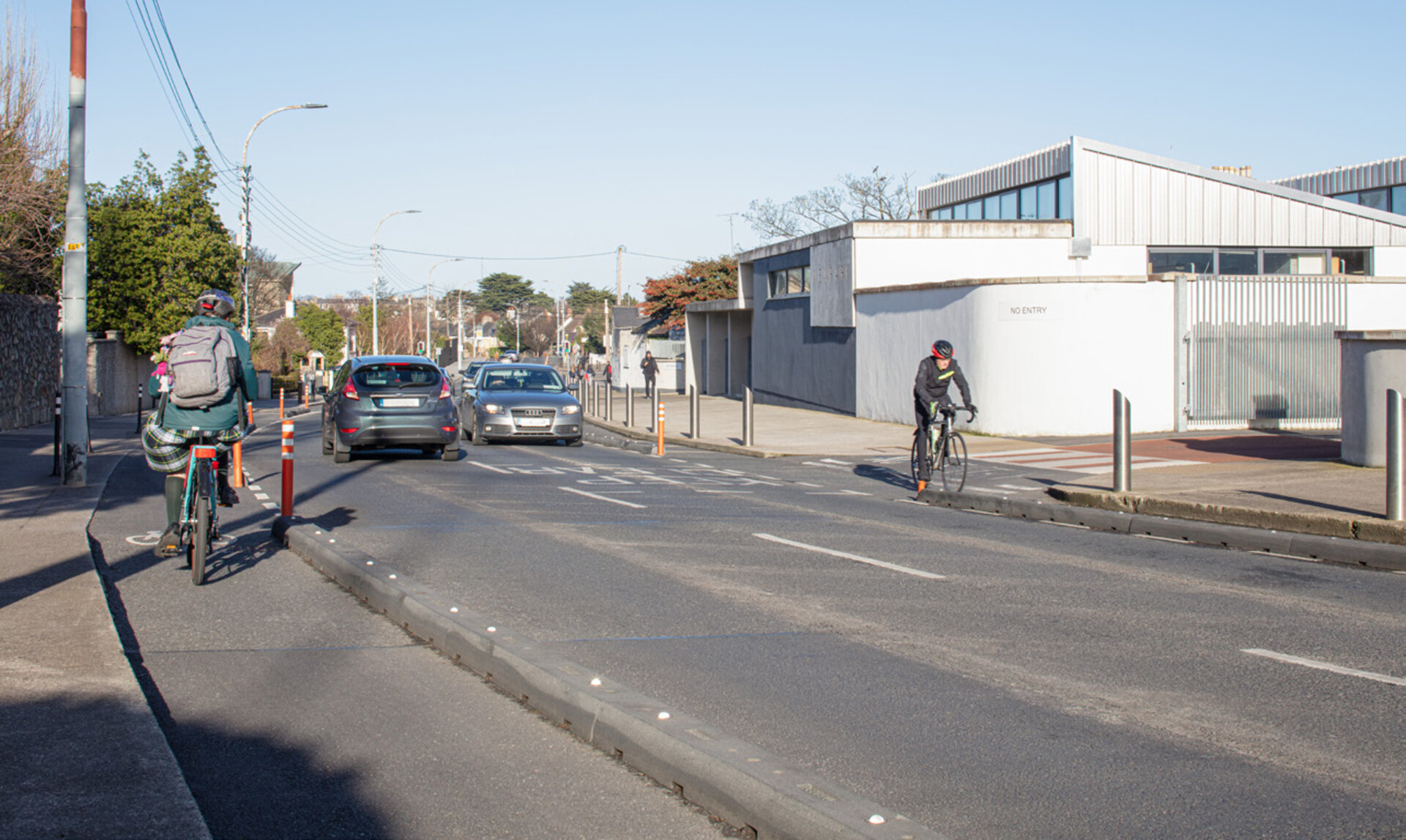Project Overview
Dun Laoghaire-Rathdown County Council in Dublin initiated an ambitious active school travel scheme aimed at providing safe, direct, and comfortable walking and cycling routes to schools throughout the Dundrum area. With several primary schools in the town and pupils regularly cycling to school, the council identified a critical need for protected cycling infrastructure to safeguard children on their daily commute.
The streets of Dundrum regularly experience vehicles exceeding speed limits, creating a hazardous environment for young cyclists. Working with Irish distributor CHM and Christian Rodila, Rosehill Highways was commissioned to design and install a comprehensive cycle lane protection system that would provide robust physical segregation while maintaining visibility and allowing safe pedestrian crossings.
The Challenge
- Vehicles regularly exceed the speed limit on the streets of Dundrum, creating dangerous conditions for cyclists
- Several primary schools in the town have pupils who regularly cycle to school but lack safe, protected infrastructure
- The council's active school travel scheme required safe, direct, and comfortable walking and cycling routes that would encourage more families to adopt active travel
- The solution needed to accommodate continuous segregation even on curved road sections while maintaining visibility in low-light conditions

The challenge: unsafe conditions for school children cycling to school
Project Objectives
- Create protected cycle routes allowing safe segregated travel around the town for school children and other cyclists
- Prevent vehicles from entering the cycle lane by introducing robust physical segregation between the cycle lane and the road
- Ensure the segregation between the cycleway and the road is clearly visible, especially in low-light conditions during winter months
- Allow pedestrians to safely cross the cycleway and road from the pavement without creating dangerous obstacles
Our Solution
- Segregate cycle lanes using our surface-mounted Narrow Cycle Lane Defenders (NCLD) which provide kerb-height physical protection
- Create sections of continuous segregation even on curved roads, thanks to the flexibility of the rubber units which can adapt to road geometry
- Incorporate a range of high-visibility bollards into the NCLD units to increase visibility during the day
- Install retroreflective glass eyes and reflective bollards to dramatically increase visibility, especially at night and during poor weather conditions
- Implement rapid installation where each NCLD can be fitted in a matter of minutes, requiring limited lane closures and allowing continued traffic flow throughout the project

Narrow Cycle Lane Defenders providing continuous physical segregation on curved road sections
Results & Impact
- Cyclists of all ages can now safely travel around Dundrum town and report feeling significantly more confident when using the protected routes
- Vehicle incursions into the cycle lane have been completely eliminated, creating a truly protected cycling environment
- The number of children travelling to school by bike has measurably increased since the installation of the protected infrastructure
- Pedestrians are able to safely cross both the cycleway and road from the pavement, with the kerb-height design providing clear delineation
- The project has encouraged more families to adopt active travel, reducing car dependency for school journeys

Safe, segregated cycling infrastructure has increased the number of children cycling to school

